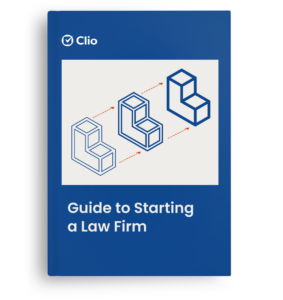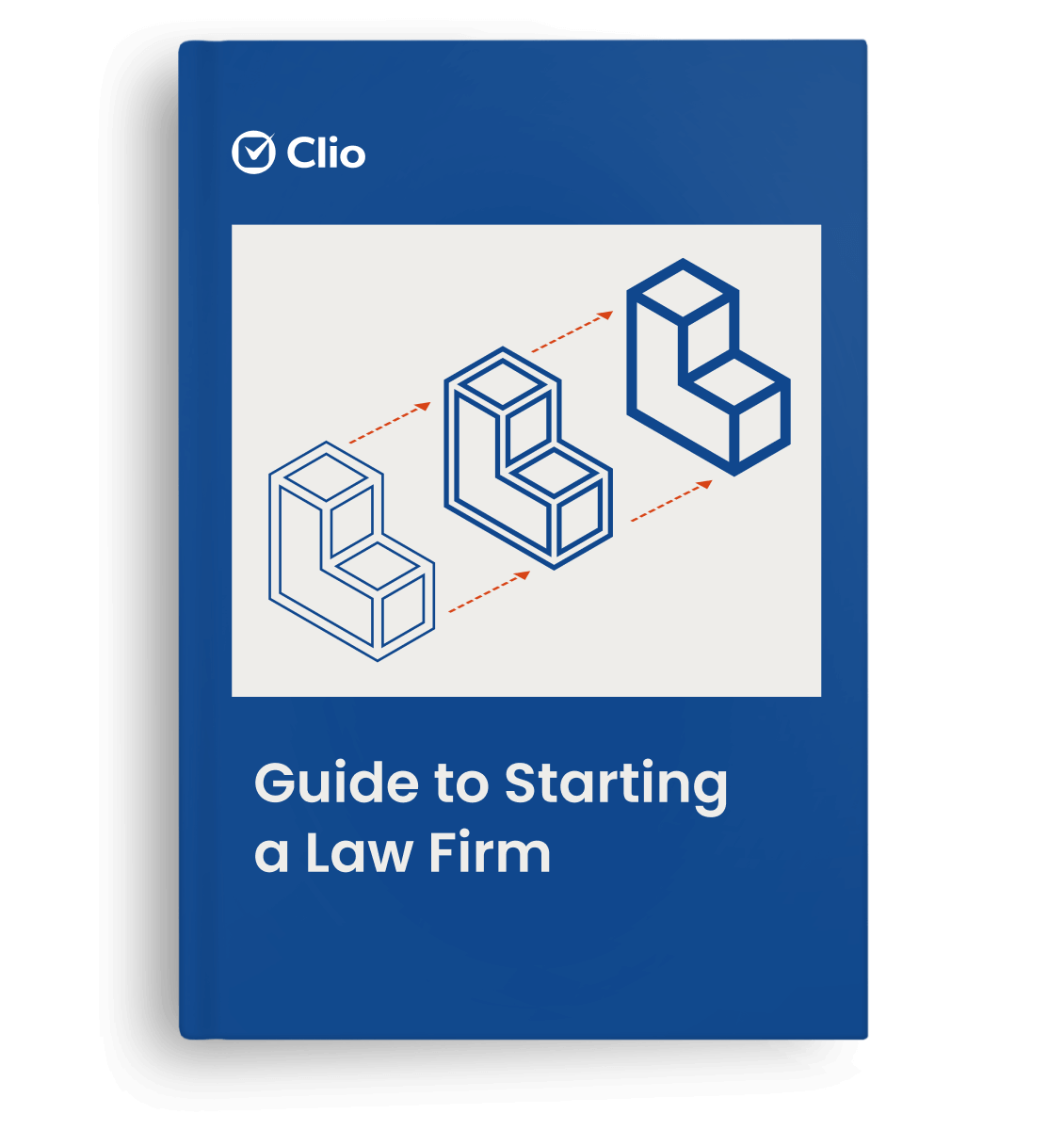While trial practice is difficult enough for most attorneys, the world of post-trial motions poses a whole other set of challenges. Not only must these motions be well-researched and thorough, they also can set up appellate issues for later. This means litigators must understand the basics of post-trial motions and how to handle them effectively.
Discover how to speed up court filing and document processes with Clio Draft’s automation features–preparing court forms has never been easier.
What is a post-trial motion?
A post-trial motion is a motion filed after the verdict has been rendered by the judge or jury and the judgment has been entered. Since post-trial motions are filed with the trial court, not the appellate court, they are generally the parties’ last chance to ask for relief from the trial court.
Post-trial motions generally ask for some extraordinary form of action from the court, such as a new trial or a judgment notwithstanding the verdict. The granting or denial of a post-trial motion is often the basis for filing an appeal. Accordingly, post-trial motions are often some of the most weighty and consequential motions filed in civil or criminal practice.
Before a trial even begins you may file, or have a pre-trial motion filed against you, learn more here: A Guide to Pre-Trial Motions.
Common types of post-trial motions
The exact types of post-trial motions available to an attorney will differ based on the jurisdiction, as well as the area of law (civil or criminal). However, below are some of the most common post-trial motions.
Motion for new trial
A motion for new trial is a request that the court vacate the judgment and order a new trial on some or all of the issues addressed in the original trial. This motion can be made after a jury or bench trial.
Although the exact grounds for granting new trial motions will differ from jurisdiction to jurisdiction, the general standard is that the trial judge believes the original judgment results in a miscarriage of justice. The statutory grounds for granting new trials in California, listed below, are a good illustration of common grounds for these motions nationwide:
- Irregularity in the proceedings. This includes the proceedings of the court, the jury, and the parties.
- Jury misconduct. Misconduct can include jurors conducting their own investigations or communicating with non-jurors about the case.
- Accident or surprise. The caveat here is the court must find ordinary prudence could not have guarded against the accident or surprise.
- Newly discovered evidence. The evidence must be material to the case, and it must be evidence that could not have been discovered during trial with reasonable diligence.
- Excessive or inadequate damages. The court must be convinced from the entire record that the court or jury awarded the incorrect amount of damages.
- Insufficiency of the evidence. As with excessive or inadequate damages, the court must be convinced the court or jury should have reached a different decision.
- Error in law during trial. The error must have been “excepted to by the party making the application”-meaning the attorney filing the motion must have objected at the time of the error.
Motions for new trial are usually filed after jury trials, not bench trials. It stands to reason that a trial judge is unlikely to reverse their own decision, except in the potential case of newly discovered evidence.
Motion for judgment notwithstanding the verdict
In a motion for judgment notwithstanding the verdict (JNOV), the moving party asks the court to render a verdict contrary to the one rendered by the jury (as noted above for new trial motions, JNOV motions are rare after bench trials).
A JNOV motion is more extreme than a motion for new trial. You are not merely asking for another chance at a trial you lost. Instead, you are asking the judge to rule you should have won and to issue a new verdict in your favor. Because of this, the standard for granting a JNOV motion is high. All reasonable inferences and factual questions must be resolved in favor of the non-moving party, and the judge cannot assess the credibility of witnesses.
Motions for new trial and JNOV motions are often filed in tandem. If the court grants both motions, the order for a new trial can stand even if the JNOV is reversed on appeal. In this way, the new trial order acts as a backup for the JNOV.
Other post-trial motions
While motions for new trial or JNOV are the most common, there are numerous other potential post-trial motions, including the following:
- Motion for attorney fees. In certain cases, the prevailing party can seek a post-trial award of attorney fees, on either statutory or contractual grounds.
- Motion for judgment of acquittal. After federal criminal trials, a convicted defendant may file this motion asking the court to set aside the conviction.
- Motion to vacate, set aside, or correct a sentence. A federal criminal defendant can file this motion after trial and sentencing-an often-used option for correcting a clerical error in the sentence
- Motion to vacate judgment. Many jurisdictions allow this motion under some narrow circumstances. In California, the motion can be brought on the grounds of an erroneous application of the law to the facts.
Check the laws, regulations, and court rules of your jurisdiction for all the potential pre-trial motions you should consider.

You may like these posts
Procedural requirements for filing post-trial motions
The procedural requirements for post-trial motions tend to be fairly exacting, with strict filing deadlines. The deadlines tend to date from the time of entry of judgment, although the exact trigger will vary between different motions and from jurisdiction to jurisdiction. For example, a motion for new trial in federal court must be filed within 28 days of entry of judgment.
Beyond filing deadlines, other procedural steps must generally be followed for post-trial motions. Most of these will include the generally required steps for all court motions, including—depending on the jurisdiction—such items as a notice of motion or a memorandum of points and authorities. In new trial motions in California, a “notice of intention” must also be filed that lists all the grounds for new trial to be asserted in the motion itself.
Preparation, filing, and service of your post-trial motion
The first step in preparing a post-trial motion is to identify the exact grounds for your motion. While you likely have some idea of the basis for such a motion from actually conducting the trial, here is where you will need to dig deeply for concrete backing for your legal contentions. This may include reviewing the trial transcript carefully, as well as the jury instructions.
Once you know the type of motion to file and the legal grounds, research case and statutory law carefully. If you need any affidavits or declarations, obtain those promptly. (As an example, claims of juror misconduct are often supported by affidavits from jurors.) Also attach any required exhibits to support the motion.
Follow all requirements of your jurisdiction for structuring, formatting, and serving the motion. The other party will generally have an opportunity to file an opposition, and the moving party will often be able to file a reply brief, prior to the hearing on the motion.
Navigating the aftermath of the court’s decision
Once the court renders its decision on your post-trial motion, you must determine how to respond to any adverse decision. What type of relief you seek will be determined by the type of motion you made and the outcome.
A primary consideration for post-trial motions you lose will be whether to appeal the decision. First determine whether you can appeal in the first place. For example, you may be able to appeal an order granting a new trial, but not appeal an order denying a new trial. (Note here that you still may be able to appeal the judgment itself, just not the denial order.) The deadline for filing an appeal is generally extended by filing post-trial motions.
Final thoughts on post-trial motions
Post-trial motions are a difficult facet of trial practice, but any litigator must be comfortable with them. Learn the ins and outs of post-trial motions for your jurisdiction so you can maximize your chances of trial success.
No matter what documents and motions you are drafting, Clio Manage can help you keep organized and stay on top of deadlines. Book a demo to see how it works today!
We published this blog post in May 2024. Last updated: .
Categorized in: Uncategorized








